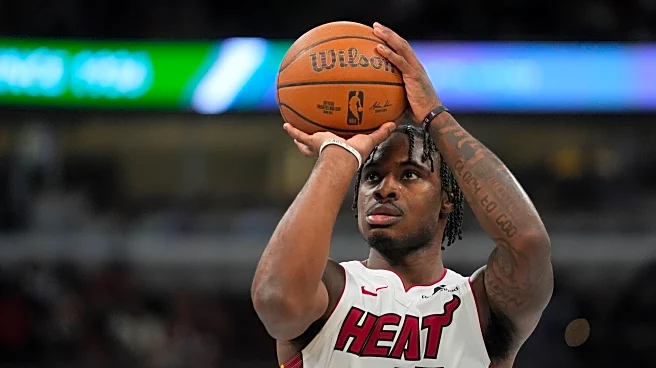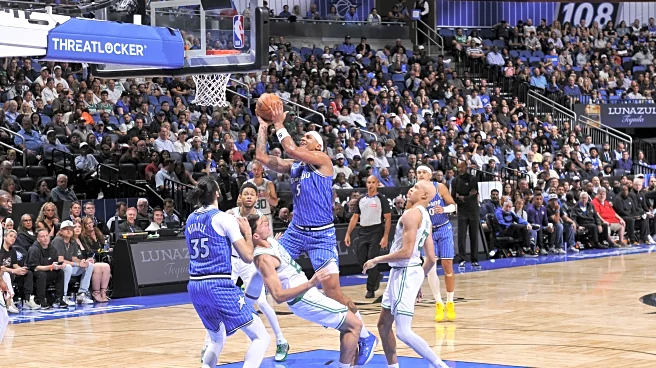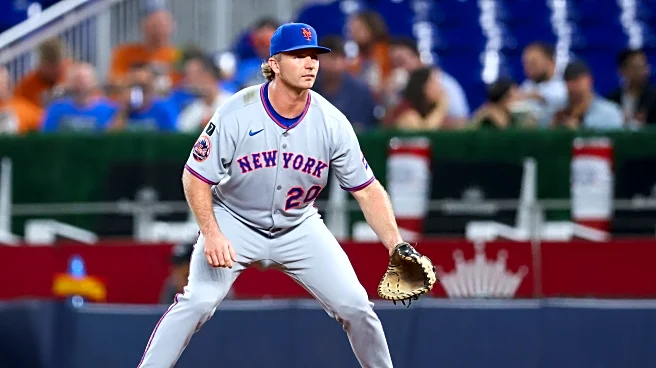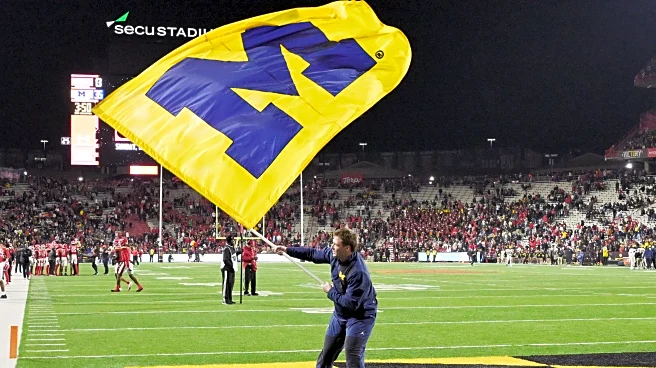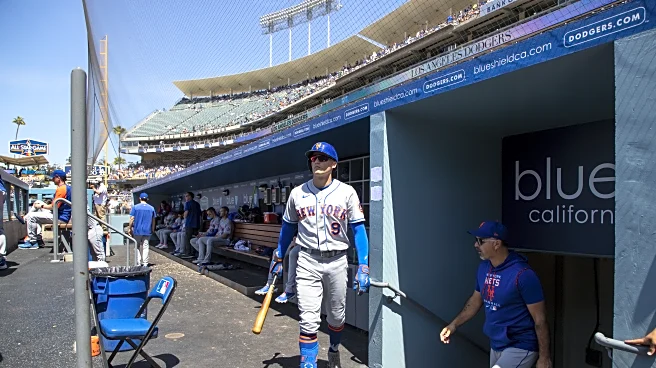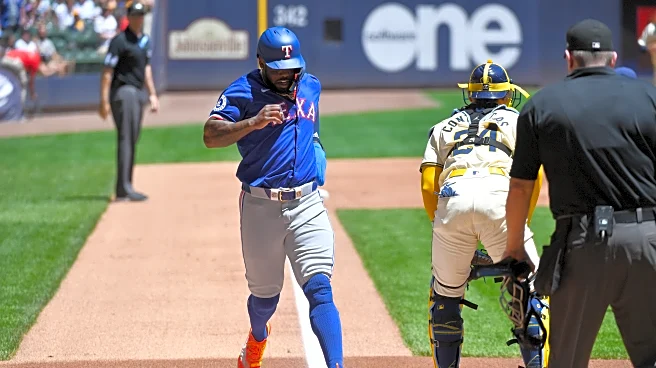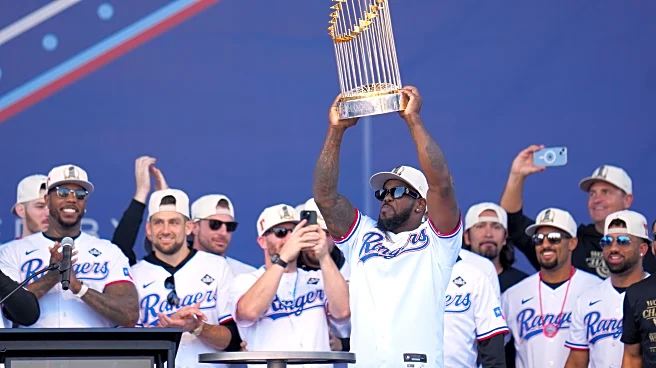Last week, we looked around the league at pitchers (both starters and relievers) that the Brewers could consider adding from outside of their organization to improve the team in 2026. This week, we’ll continue surveying the league, this time looking at position players. Today we’ll look at infielders (and catcher), and later in the week we’ll look at the outfield.
As we’ve been doing, we’ll start by assessing the team as they head into 2026, then take a look at some options.
The Need
The Brewers enter the 2026
season in an interesting spot. Theoretically, almost all of their infield positions are spoken for: all of the starters and backups who played in the 2025 postseason are returning except for one, backup catcher Danny Jansen. A quick run around the diamond: William Contreras was still one of the best catchers in the league despite a “down” offensive season. At first base, the Brewers tendered Andrew Vaughn a contract and signed Jake Bauers to a deal to avoid arbitration, so the platoon options that were available to them last season are both back. Brice Turang is coming off of a breakout season at second base and looking to vault himself into stardom. Caleb Durbin finished third in Rookie of the Year voting and looks like the answer at third base, at least for now. Andruw Monasterio will return as a cheap, serviceable utility option capable of playing anywhere in the infield. Also on the 40-man roster: Tyler Black (who probably doesn’t have a major-league role with Bauers around) and Anthony Seigler, who didn’t get much in terms of results last season but will still likely be in the mix.
These are all solid options, but I skipped one. Joey Ortiz, the incumbent shortstop, struggled badly at the plate in 2025 after falling apart in the second half of the 2024 season. Throughout much of last season and especially in the playoffs, Ortiz was essentially a zero: he finished the regular season with a .276 OBP and finished with fewer doubles, fewer triples, and fewer home runs than he’d hit as a rookie in 2024. In the postseason, he had two singles and three walks in 23 plate appearances.
The fact that he was so much worse than he was in 2024 could offer something to optimists: he showed signs of being a legitimately solid hitter in 2024 (even with a rough second half, he finished with a 102 OPS+), and it would be reasonable to expect him to have some level of bounceback in 2026. After all, Ortiz played a good shortstop, so even if he splits the difference between his 102 OPS+ in 2024 and his 66 OPS+ in 2025, he could still offer legitimate value—certainly enough to justify sticking with him while the team awaits the arrival of Jesus Made and/or Cooper Pratt (almost certainly not until 2027, but if Pratt starts the year hot…).
But at the same time, there’s not much to feel good about in the underlying metrics (Ortiz doesn’t strike out much, but that’s about the only good thing you can say about his 2025 season at the plate), and you can’t help but think that offense from the shortstop position is one of the few areas where a team that won more games than anyone else last season has a real opportunity to improve. It feels like it would have to be a big swing for the Brewers; they have enough invested in Ortiz, a former top-100 prospect who nearly had three WAR just over a year ago, that it doesn’t make sense to try to upgrade with an uninspiring veteran that they hope has a surprising offensive season or a better offensive option that harms their defense. The Brewers also have a solid backup in Monasterio (capable defense and a 109 OPS+ in a very difficult, sparse role in 2025), so a marginal move doesn’t seem like it’s in the cards here.
There is, however, one thing they could try: a platoon. Ortiz hit .289/.319/.415 against left-handed pitching in 143 plate appearances in 2025, which was actually better than league average. The Brewers could look into a veteran who handles right-handed pitching, but they’d want to be careful about harming the defense, and it would really be marginalizing Ortiz by only letting him face left-handed pitching.
Backup catcher will also need to be figured out (and I’m going to assume that Seigler, who caught some in the minors last season, is not a realistic short-term choice). Matt Arnold did leave the door open to the possibility that Jeferson Quero, an organizational top-five prospect (by most ranking systems) who played at Triple-A last year, could make the opening day roster. It doesn’t seem likely to me, since the team has a track record of ensuring that their promising rookies do not accrue that full year of service time as rookies, but besides Contreras and Quero, there isn’t another catcher on the 40-man roster. So it’s either Quero from the jump or someone is brought in.
So, to recap: Contreras remains a team leader behind the plate. First base is covered by Vaughn and Bauers, with Black an option in the minors. Turang is locked in at second base (unless an outside acquisition moves him to shortstop), Durbin showed enough to claim the third base job, and Ortiz will probably start the season at shortstop, barring something unexpected. Monasterio is the utility option, with Seigler behind him. Quero is the only in-house option for backup catcher, but an outside move is likely.
Free Agents
First, let’s look at catchers. There are several guys here who could serve as a capable backup, but if the Brewers think Quero is just about ready, they might not want to spend the money that it might take to, for example, bring Jansen back into the fold. But, never say never—and did you know that Danny Jansen is from Appleton? His $12 million mutual option was too rich for Milwaukee’s tastes, but they might be open to a cheaper deal. But it’s hard to imagine the Brewers would spend more than a couple million on a backup catcher at this point, and Jansen should be able to get that somewhere else; he can make a pretty credible claim to being this free agent class’s second-best catcher (after J.T. Realmuto, who is four years older than Jansen).
Another name at the top of this group is another former Brewer, Victor Caratini. Caratini served two years as the backup in Milwaukee in 2022 and 2023 before moving to the Astros and serving in a similar role there. He’s been an above-average hitter in each of the last two seasons, but his defensive numbers are mixed. He’s probably too much of a luxury for the Brewers in this role, and should get more than Milwaukee should be willing to offer him.
But there’s one name that might make the most sense for everyone involved: Eric Haase. Haase was designated for assignment by the Brewers after they traded for Jansen at last year’s’ trade deadline, but he cleared waivers and finished the season with Triple-A Nashville. The Brewers know him, he knows the pitching staff, he can hit enough, and he’s the sort of cheap option that could fill in until the Brewers decide it’s Quero time.
The options get pretty yucky pretty quickly after that, but this is the tier the Brewers would likely be shopping in. Someone like Christian Vázquez, Reese McGuire, or Jacob Stallings could be an option, but none inspire much confidence. Jonah Heim might be a worthwhile change-of-scenery candidate after getting non-tendered last week: his defensive numbers with the Rangers were quite good from 2021-23, but the last two seasons were pretty ugly on both sides of the ball. Anyone else would likely come from the high minor leagues, and it’s difficult to know what the Brewers would be looking for in that type of deal.
On the infield side of things, I truthfully don’t really see a whole lot of options that make much sense for the Brewers. It’s possible that they could try to upgrade their utility infielder situation, but doing so would mean paying actual money for someone who might have a better season than Monasterio rather than just bringing Monasterio, who seems to be a beloved teammate, on a pre-arb contract. Potential utility types could include Ramón Urías, his brother Luis (unlikely but fun to think about), Isiah Kiner-Falefa, or Paul DeJong (which I feel like I say every year), but none of these feels like a great move. Veteran platoon options for Ortiz are scarce: one conceivable possibility is the veteran Adam Frazier, but even for a platoon guy that’s counting on him for a lot of at-bats at age 34. Frazier also doesn’t play shortstop, so this would require Turang to play shortstop but only on days when the opposing pitcher was right-handed. Too many moving parts. Another is Dylan Moore, a utility type who hits right-handers reasonably well.
If the Brewers really wanted to make a big swing in free agency, they could go for the biggest fish on the middle infield market and make a run at Bo Bichette. Bichette played well for the Blue Jays in the World Series, and off of that momentum Toronto seems very willing to spend this offseason. A reunion seems by far the most likely outcome. But if Toronto manages to blow their whole budget on Kyle Tucker and they choose to move on from Bichette, it would be an interesting move to ponder: Bichette isn’t a very good shortstop, but he’s an excellent hitter. Moving Turang from second base to shortstop and putting Bichette at the less-demanding second (or even third, with Durbin moving over) would certainly be an interesting move. This would be a wild and exciting move, but this Brewers front office is hardly known for being wild or exciting, and I’d give the chances of this happening somewhere around 0.5%.
(I’m not even going to address Alex Bregman. I did that last year, when it looked like a potentially perfect fit, and acknowledged at the time that it had no chance of happening. With Durbin in the fold, the need isn’t as urgent for a major upgrade at third base.)
If Milwaukee thought that more home runs was the answer they needed, they could target a name we’ve heard around here a lot, Eugenio Suárez. But this would mean a significant downgrade defensively, whether Suárez played third or did more designated hitting, thus forcing Christian Yelich into more outfield work (which doesn’t seem wise for reasons beyond just defense). This feels like a square peg/round hole situation.
Trade Targets
Ah, here’s where we can have some real fun.
I’m going to acknowledge that it’s possible that the Brewers could trade for a utility-infield type, but I’m not going to bother listing potential targets. I don’t think this is a priority for the front office and it’s too difficult to know what they might be looking for.
Instead, I’ll look around a bit to see if there could be a backup catcher somewhere that could be had for cheap, and then I’ll do what we would really all like to do: search for a bat that would make a meaningful impact, and figure out how that bat might fit into this lineup.
As far as backup catchers: Miguel Amaya might’ve been an option if the Cubs had any confidence in Moises Ballesteros’ defense, but I don’t think they do, and the Cubs probably aren’t going to trade with the Brewers, anyway. The other Chicago team has three young-ish catchers who are at least mildly interesting, and they might be willing to let go of Korey Lee with the younger Kyle Teel and Edgar Quero already in the big leagues. Lee can sort of hit and was once a well-regarded prospect, and the cost would probably be too high for this role.
The Reds recently claimed Ben Rortvedt off of waivers. He has bounced around and can’t hit a lick, but his defense is pretty good and the Reds are already paying Jose Trevino and Tyler Stephenson. This could be “acquired for cash or a player-to-be-named” type of deal. Maybe the Phillies’ Rafael Marchán could be an option if Realmuto returns to Philadelphia.
I don’t have a whole lot of ideas beyond that. We’ll see whose name turns up, because I think it’s extremely unlikely that the Brewers don’t enter the season with a third catcher on their 40-man roster.
Now to the fun stuff: who is an infield bat who isn’t a first baseman who the Brewers could make a blockbuster trade for to jumpstart the offense? The assumption here is that whoever this person is, they would replace Ortiz in the starting lineup, but not necessarily at shortstop: I’m going to assume that if a star player who worked best at second or third base was acquired, the team would move Turang to shortstop and, if need be, Durbin to second base.
Remember, if I’m Matt Arnold, I’m only doing this if I’m aiming high. I feel fine about Ortiz as my opening day shortstop in 2025, but I’ll make a move if one presents itself.
The biggest real name that has been whispered in trade rumors is Arizona’s Ketel Marte. Arizona certainly does not need to trade Marte, who is one of the league’s best players; in the past three seasons, he’s hit .283/.368/.519 (141 OPS+) and averaged 6.3 WAR per 162 games. But Merrill Kelly is gone (traded to Texas and then became a free agent) and Zac Gallen is also a free agent, and Arizona—who has had one of the best offenses in baseball the past three years—needs pitching. They’ve also got one of the game’s top prospects on the cusp of claiming a big-league job (Jordan Lawlar) and arguably the National League’s best shortstop (Geraldo Perdomo), so middle infield is a position of strength.
The Brewers do have depth in starting pitching, and could likely entice the Diamondbacks with a couple of their big-league ready young pitchers. You have to assume that Jacob Misiorowski is off limits, but what about a deal involving, say, two of Chad Patrick, Logan Henderson, and Robert Gasser, plus some highly regarded talent from lower in the minors? That would create real questions at a different part of the Brewers’ roster, but you might get the Diamondbacks to listen.
Marte’s contract is actually fairly reasonable as far as big-money contracts go: he is signed through 2030 for roughly $100m (that money isn’t flat, but it works out to just under $20m per season) with an $11m player option in 2031, when he’ll be 37. This is something the Brewers could afford.
None of these blockbuster trades are likely to happen, but the Brewers and Diamondbacks both have needs, and you could see either of these teams talking themselves into it.
I would not pretend to believe that I have any idea what the Angels are doing at any given time, but Zach Neto is a star, he starts getting expensive this year, and the Angels are going to be bad. Baseball Reference and FanGraphs disagreed about Neto’s defense in 2025, but he’s got back-to-back seasons with an OPS+ of at least 112 and DRS, at least, thinks he’s a great defensive player. (OAA disagrees, and has had him in the bottom ten percent in range in each of the last two seasons. A red flag, perhaps.)
I do not think that Arte Moreno has any interest in trading good players for prospects. A different front office and it might be a different story, but I don’t think this is realistic.
There’s been some talk about CJ Abrams, who hits his first year of arbitration this year and is on a terrible team in Washington. There are real concerns about his defense, but he can hit, he’s an excellent baserunner, and he didn’t turn 25 until last month. This would definitely upgrade the offense, and maybe you can mitigate some of the defensive issues by moving him off of shortstop, but it doesn’t feel like a Brewers-y move.
Miami has two pretty good young infielders, either of whom could be a target. Otto Lopez isn’t exactly a major offensive upgrade, but he’s got some interesting Statcast numbers and he’s been much better offensively the last two seasons than Ortiz was last year. He’s also a slick fielder, and is the type of high-floor, great defense player that the Brewers like. But he’s got four more years of team control so won’t come cheap, and a little bit of a dip plus some bounceback from Ortiz and it’s not out of the question that Ortiz could outperform him at the plate. Playing alongside him in the infield last season was Xavier Edwards, who had an .820 OPS in 70 games as a rookie in 2024 and hit .283/.343/.353 in 2025. Edwards, like Lopez, isn’t a sure thing offensively but he can play defense (though not at Ortiz’s level) and he runs the bases well.
Last big one, inspired by current events: while I was writing this piece, the Mets traded Brandon Nimmo to Texas for Marcus Semien. With Francisco Lindor holding down short and Semien moving in at second, there aren’t a ton of at-bats for both of Mark Vientos and Brett Baty. Vientos was excellent in 2024 but regressed in 2025. Baty finally put it together offensively last season and didn’t embarrass himself defensively while splitting time between second and third base. Baty has an excellent track record as a hitter in the minor leagues, and still offers a lot of upside at only 26 years old. The Mets probably don’t need both of them, and they’ve still got a couple of promising young infielders to spare in Luisangel Acuña and Ronny Mauricio. Maybe Arnold and his old buddy David Stearns can make a deal.
Finally, here are a few smaller trade candidates who have good platoon splits versus right-handed pitching; all would present real defensive problems, perhaps unsolvable ones, but all offer upside for the offense.
- Oneil Cruz’s career as an infielder is probably over, but if Milwaukee thought they could find a way, he has a scintillating toolkit and a career .795 OPS against right-handed pitching. Hard to see how he’d fit, but I’d take a flyer if you could convince the Pirates to give up on him for cheap.
- Brandon Lowe had an OPS of almost .900 against right-handed pitching in 2025.
- Brendan Donovan is probably a good enough player that he should get his own category on this list. There is talk that St. Louis is making Donovan available in trade talks, and while he’s not a very good defensive player and would need to push Turang to shortstop, he can really hit, especially against right-handed pitching.
Conclusion
Milwaukee’s needs in the infield are not especially pressing. They’ll need to figure out a backup catcher if they don’t want to delay Jeferson Quero’s clock, but I’m looking at Eric Haase as the potential solution there.
The bigger item is that they could, conceivably, make a big trade to look for an upgrade over Joey Ortiz, whose offense last season was, in a word, troubling. I think it’s far more likely that Milwaukee goes into the season with Ortiz and trusts that their development apparatus will work its magic again—remember, it was Turang’s third season in which he broke out—but I named a few big potential targets if the Brewers were ready to part with some of their high-end prospects: Ketel Marte, Zach Neto, CJ Abrams, Brett Baty, and Otto Lopez.
Please don’t get your hopes up: I expect Ortiz to be manning shortstop on March 26th, and I’m actually somewhat optimistic that he’ll show some improvement offensively next season with regular at-bats. The Brewers have a bunch of infield options in the minor leagues that could be ready by the end of the 2026 season, so they’d probably be cautious about trading a ton of prospect capital for this part of the roster. But it’s worth a look around.




